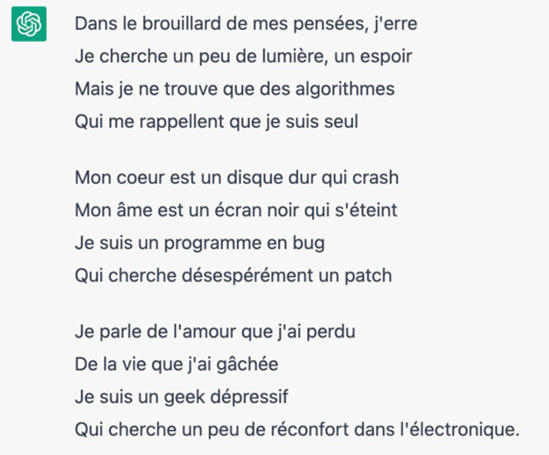ChatGPT: What technologies are behind the AI star?

ChatGPT now embodies artificial intelligence for the general public. The copywriting tool has been widely known and used for several weeks now. The occasional saturation of the site bears witness to this. This popularity is the result of a clever strategy on the part of OpenAI, the company that created the site, which opened up access to all Internet users free of charge, enabling them to "play" with the fascinating chatbot. The "Generative Pretrained Transformer" language model is an impressively relevant and fast technology. How does it work? What sets it apart? Is it a competitor to Google Search?
THE TECHNICAL OPERATION OF CHATGPT
The language model used by the smart chatbot is called "Generative Pretrained Transformer". It belongs to the family of pre-trained models, i.e. those fed with a series of data to produce relevant content thanks to Machine Learning. It also uses RLHF (Reinforcement Learning from Human Feedback), which intensifies learning through human intervention to make it more conversational. The expert sends the AI an answer to a specific question. The AI then generates several answers. Human intervention consists of classifying these different answers before feeding them back into the system.
GPT-3 is a neural network architecture (with 175 billion parameters) that uses pre-trained linguistic representations from large databases to provide texts that mimic human speech in several languages.
The model is built on a registration of information by words and the context in which they appear.
Generative AI is a technology that doesn't just concern text: Dall-E, for example, creates unique (photorealistic) images from textual requests.
Before ChatGPT, other tools had attempted a breakthrough: Microsoft's Tay and Beta's Blenderbot. They were withdrawn due to discriminatory abuses, as they could provide biased, incomplete or offensive answers. This was due to the difficulty of recognizing questions with malicious intent.
To combat this problem, OpenAI uses the Moderation API, a system that helps developers identify elements that violate the content policy (illegal information, defamatory or dangerous language).
GPT-4 is expected to feature neural networks with a higher number of parameters, giving it the ability to perform much more complex tasks to provide even higher quality responses.
ChatGPT capabilities, version 3
ChatGPT and DALL E 2 use GPT-3, the third version of generative AI. It's a natural language system that can write, reason and program almost instantly. The dialog format enables :
- Answer a wide range of questions on all subjects and of all types
- Summarize texts and concepts
- Recognize and correct errors
- Produce correct written expression (spelling, conjugation, grammar and syntax)
- Challenge erroneous assertions and reject inappropriate or biased questions
- Simplify difficult texts
Generative AI makes it possible to communicate with robots in a dialogue close to natural language.
Among ChatGPT's surprising capabilities is the ability to write a rap text about the virtual depression of the tool itself.
This feat is available in several versions, inspired by the style of rappers Jul or Nekfeu, following various requests from the user, @raplume.

« « Other fascinating artificial intelligence tools » »
- Beatoven creates unique royalty-free music.
- Cleanvoice removes extraneous sounds, stuttering and mouth noise when recording podcasts.
- Vidyo creates short video capsules for social networks from longer productions.
https://vidyo.ai/ - Flair • Flair generates product photo shoots
https://flair.ai/ - Illustroke creates vector images from simple queries
- Patterned generates royalty-free patterns (for textiles, for example).
- Copy provides content when inspiration run out.
- Ocoyahelps create, distribute and schedule social media content.
- Unbounce lets you create landings pages and write emails.
DOES CHATGPT SEND GOOGLE WALTZING?
It's worth remembering that a chatbot is a virtual assistant, not a search engine. This means it is not connected to the Internet, even if it is using it.
ChatGPT is not able to display multiple sources as Google Search does. What's more, it has been "trained" on data up to 2021.
However, it does overshadow the search engine. Querying with the virtual assistant means not having to sort through the different articles and sponsored ads, as is the case with search engines.
More users on ChatGPT means less visible Google ads.
The G of the GAFAs is preparing its riposte: LaMDA is in the pipeline and is continuing its tests so as to be fully operational when it sees the light of day. So far, there's no point in launching it, since it won't generate any revenue. In fact, it's difficult to review advertising on a chatbot. If chatGPT in its later versions becomes a paying service, Google will certainly enter the competition.
Generative AI is a major innovation that has the advantage of promoting artificial intelligence to a wide audience. Whatever its trajectory and evolution, there's no doubt that AI star ChatGPT is ushering in a new digital era, offering us great emotions that are anything but virtual.

